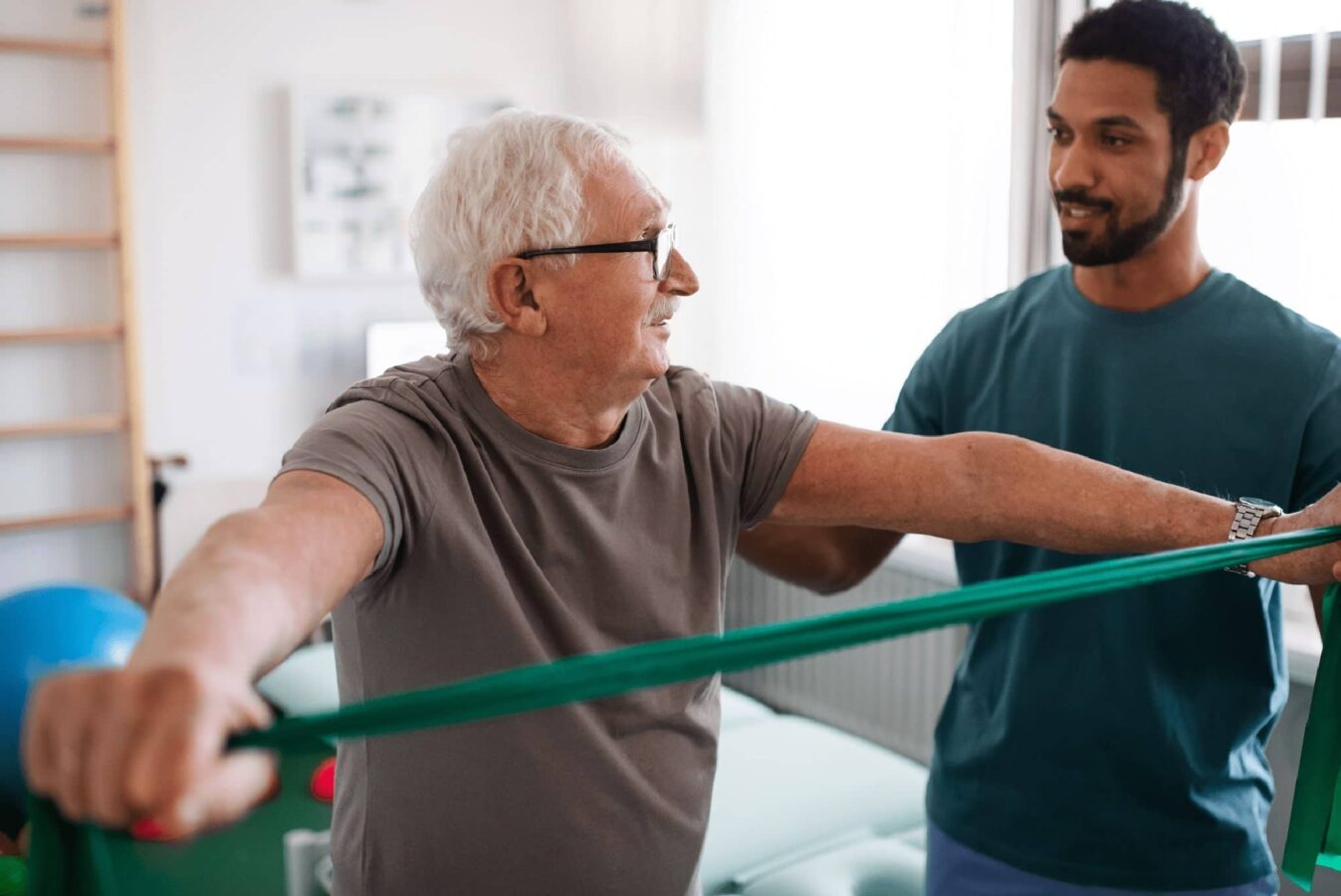
by: Thomas Davis, PT, MPT, Area Manager in Raleigh, NC
Approximately 1 million Americans are living with Parkinson’s disease, a chronic and progressive movement disorder.
-Slowness of movements
-Tightness/stiffness in the extremities and trunk
-Balance and walking difficulties
-Changes in posture
Despite years of intensive research, the cause(s) are unknown. Genetic factors may play a role, and illness or environmental toxins may contribute. New research has focused on studying the chemical or genetic trigger that starts the depletion and death of the dopamine neurons with hopes of developing treatments to stop or reverse the disease. Dopamine neurons function as a neurotransmitter – a chemical released by the nerve cells to send signals to the other nerve cells. Dysfuction in this system is associated with PD and can lead to impaired mobility and tremors.
Although there is no cure for Parkinson’s, treatment options to manage symptoms include medication, surgery and physical therapy.mptoms.
-Keep track of when you need your medications
-Exercise
-Eat properly
-Cope with symptoms and side effects
-Find a support network
-Stay independent
Mounting evidence suggests aerobic and learning-based exercises (given by a physical therapist) can help improve functional mobility in Parkinson’s patients.
Physical therapy that includes large amplitude rhythmic movements that challenge direction of movement as it relates to functional mobility tasks has been shown as an effective way to increase mobility independence. Physical therapy using postural re-education and center-of-gravity training techniques appear to be beneficial in the reduction of falls in both the general elderly population and those living with PD.
-Golf
-Tennis
-Tai chi
-Yoga
-Dancing
-Walking/marching
Choosing the right exercise program is will help maximize your return to independent mobility and minimize your risk of falls and injury. It is important to consult with your physical therapist and health care team to develop a program that is most suitable based on your impairments and current mobility level.
The right exercise program will challenge your motor planning, increase your heart rate, demand attention, and variably progress in difficulty over time.
Parkinson’s need not manage your life. Instead, patients can actively live with the disease by managing their medications and activities to promote a healthier lifestyle with safer mobility.
